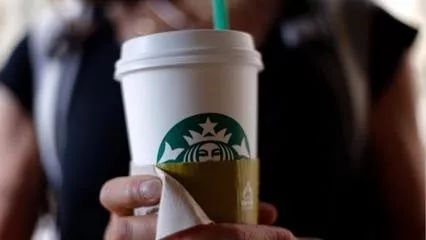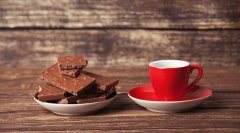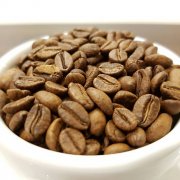The difference between decaf beans and decaf beans is Starbucks decaf beans?

Professional coffee knowledge exchange more coffee bean information please follow the coffee workshop (Wechat official account cafe_style)
The origin and development of decaf: why are all Swiss decaf sold?
Once upon a time, a group of French people brought Yemeni coffee beans to an island in the Indian Ocean. Because the climate and soil of the island were completely different from those of Yemen, these coffee trees changed there for nearly a hundred years. The beans became sharp. People at that time drank and found that even if they drank more, they would not lose sleep. It turned out that this very different climate made the genetic disorders of the beans outside the door. Unable to make caffeine normally, it produced delicious coffee with low caffeine, but because the yield of this variety of beans was so low, the residents of the island stopped planting coffee trees and planted sugar cane instead, so the delicious coffee beans with low caffeine disappeared.
Then, decades later, Mr. Kawashima, a coffee expert at UCC in Japan, heard from some old coffee farmers that low-caffeine beans still existed in the world, so Mr. Kawashima, who was unwilling to let the delicious coffee disappear, came to the island in 1999 to look for coffee trees in the sugar cane plantation, but the local islanders kept throwing cold water on him, saying that after decades, they had never heard of coffee trees on the island. He also tried to send Mr. Kawashima with some canned coffee, but Mr. Kawashima didn't give up and left his contact information and asked the local farmers to help pay attention. Two years later, Mr. Kawashima received a phone call saying that several coffee trees had been found on the island. He immediately went to identify them with French scientists and confirmed that they were ancient decaf coffee trees. So the French Agricultural Development Center launched a plan to revive low-caffeine coffee trees with UCC of Japan, and then in Ethiopia, a natural genetic treasure house of coffee, other varieties of low-caffeinated coffee have been found one after another. Decaf coffee already accounts for 10% of the global coffee market.
Most of the common decaffeinated coffee on the market is to remove caffeine manually. At present, there are three ways to remove caffeine manually:
1. Solvent treatment: add chemicals to raw beans, then neutralize them with caffeine, and then steam away the potions and caffeine. This is written on the Starbucks website as "direct contact". The content is not very detailed, and there is a picture of holding a handful of beans in one hand. At first, I would think that as long as I hold the coffee beans, I can remove the caffeine. Maybe adding solvent feels scary, so it doesn't say much, in fact. It's really scary.
2. Swiss water treatment: this is also one of Starbucks' ways to remove caffeine. This method first pours the first batch of beans into hot water to release coffee flavor and caffeine, and then throws away this batch of beans. Then the hot water uses activated carbon to filter caffeine, leaving caffeine-flavored water, and then throw in a new batch of beans to release coffee flavor and caffeine, but because the hot water already has coffee flavor. Therefore, in the soaking process, it can bring back the coffee smell of the beans, but it is undeniable that part of the coffee flavor will be lost.
Third, carbon dioxide treatment: put coffee beans into liquid carbon dioxide, then use high pressure to extrude caffeine into gas, and filter caffeine with activated carbon.
Some people have misunderstandings about caffeine and think that it is healthy to consume as little caffeine as possible, but they covet the delicacy of coffee, so they will order a cup of decaffeinated coffee when they go to the coffee shop. But if you drink artificially decaffeinated beans, do you really think this is a healthy cup of coffee? Why not ask the shopkeeper next time if you are using natural low-caffeinated coffee beans? if not, for you who are health-oriented, you should have a cup of normal caffeinated coffee!
.
Important Notice :
前街咖啡 FrontStreet Coffee has moved to new addredd:
FrontStreet Coffee Address: 315,Donghua East Road,GuangZhou
Tel:020 38364473
- Prev

Colombia-how is decaf processed by EA in Germany made? Water-EA treatment method
Professional coffee knowledge exchange more coffee bean information please follow the origin and development of decaf coffee in coffee workshop (Wechat official account cafe_style): why are all Swiss water treatment decaf coffee sold? Columbia decaf-German EA treatment Colombia Decaffeinated Coffee EA Processed Colombian decaf German EA treatment, for
- Next

Natural decaf beans-pointed bourbon story what other varieties of decaf are there?
Professional coffee knowledge exchange more coffee bean information please follow the origin and development of decaf coffee in coffee workshop (Wechat official account cafe_style): why are all Swiss water treatment decaf coffee sold? Pointed Bourbon / Wild Natural semi-decaf Bourbon Pointu Coffee Bean King: pointed Bourbon Bourbon Pointu, one of the rare boutique coffee beans in the world.
Related
- Beginners will see the "Coffee pull flower" guide!
- What is the difference between ice blog purified milk and ordinary milk coffee?
- Why is the Philippines the largest producer of crops in Liberia?
- For coffee extraction, should the fine powder be retained?
- How does extracted espresso fill pressed powder? How much strength does it take to press the powder?
- How to make jasmine cold extract coffee? Is the jasmine + latte good?
- Will this little toy really make the coffee taste better? How does Lily Drip affect coffee extraction?
- Will the action of slapping the filter cup also affect coffee extraction?
- What's the difference between powder-to-water ratio and powder-to-liquid ratio?
- What is the Ethiopian local species? What does it have to do with Heirloom native species?

